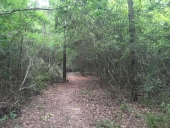
 9
9




South of the Salt Fork
 12
12




Visit Redhawk's soil series: https://permies.com/wiki/redhawk-soil
How permies.com works: https://permies.com/wiki/34193/permies-works-links-threads
 8
8




I'm only 65! That's not to old to learn to be a permie, right?
 9
9




South of the Salt Fork
 3
3




AI said, `Before settlers arrived, Greer County, Oklahoma was primarily a vast, open grassland with rolling plains, dotted with occasional streams and primarily used as a hunting ground by Native American tribes like the Kiowa and Comanche, with large herds of bison roaming the area; the landscape was largely untouched by human development, with the North Fork of the Red River marking a significant geographical feature
Invasive plants are Earth's way of insisting we notice her medicines. Stephen Herrod Buhner
Everyone learns what works by learning what doesn't work. Stephen Herrod Buhner
 8
8




South of the Salt Fork
 5
5




Anne Miller wrote:
When I saw the title I thought you would be in South Dakota.
For inspiration:
AI said, `Before settlers arrived, Greer County, Oklahoma was primarily a vast, open grassland with rolling plains, dotted with occasional streams and primarily used as a hunting ground by Native American tribes like the Kiowa and Comanche, with large herds of bison roaming the area; the landscape was largely untouched by human development, with the North Fork of the Red River marking a significant geographical feature
South of the Salt Fork
 7
7




 6
6




 7
7




South of the Salt Fork
 6
6





 5
5




Working toward a permaculture-strong retirement near sunny Sperling.
 6
6




sow…reap…compost…repeat
 4
4




 4
4




John Daley Bendigo, Australia The Enemy of progress is the hope of a perfect plan
Benefits of rainfall collection https://permies.com/t/88043/benefits-rainfall-collection
GOOD DEBT/ BAD DEBT https://permies.com/t/179218/mortgages-good-debt-bad-debt
 6
6









Hans Albert Quistorff, LMT projects on permies Hans Massage Qberry Farm magnet therapy gmail hquistorff

|
These aren't just sunglasses. They are a coolness prosthetic. For this tiny ad:
The new gardening playing cards kickstarter is now live!
https://www.kickstarter.com/projects/paulwheaton/garden-cards
|





